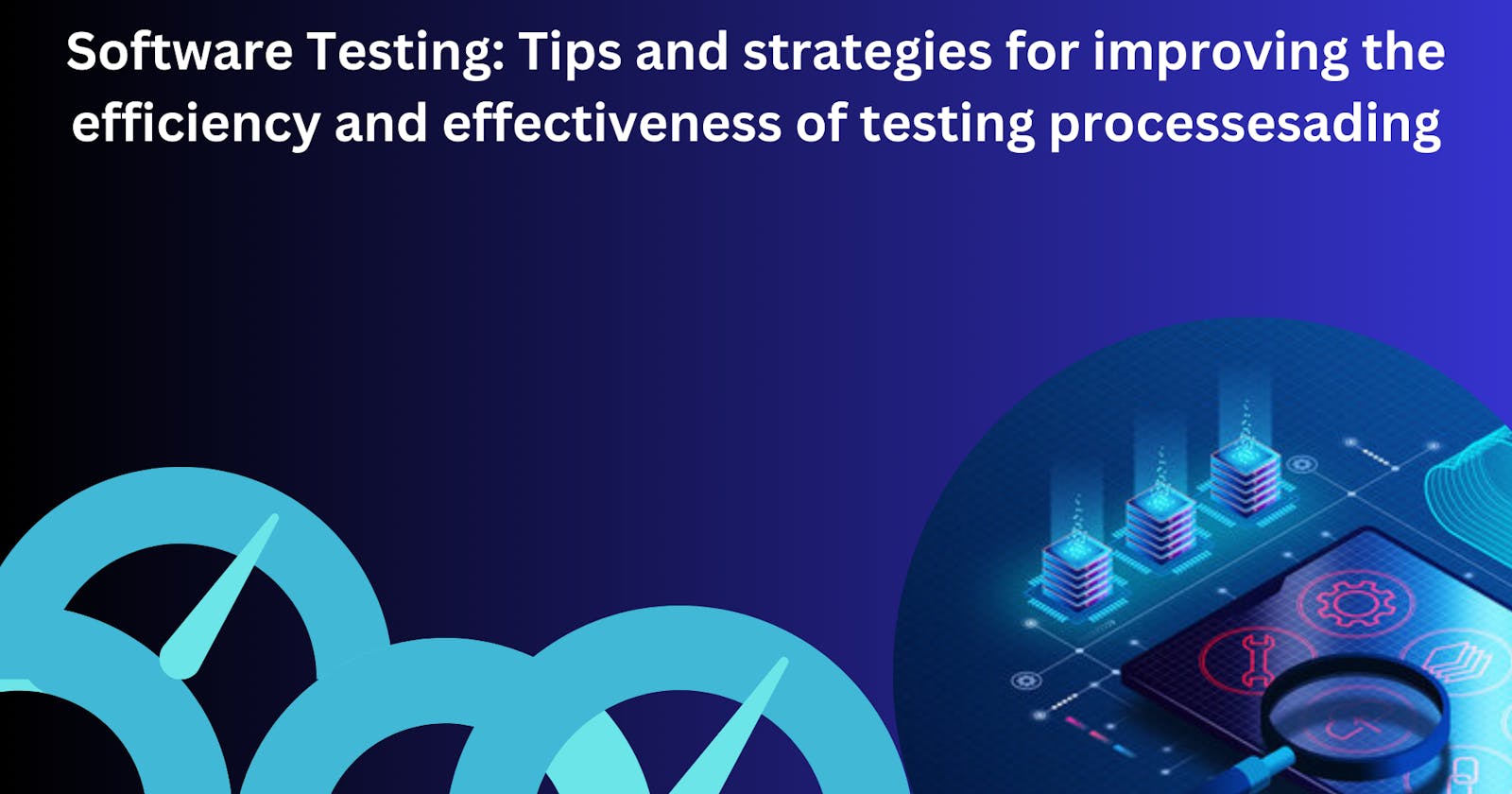Software Testing: Tips and strategies for improving the efficiency and effectiveness of testing processes
In the ever-evolving landscape of software development, ensuring the quality of software products is paramount. Software testing plays a pivotal role in this process, serving as a critical step in identifying defects, improving functionality, and enhancing user experience. However, to maximize the efficiency and effectiveness of testing processes, it’s essential to adopt best practices that align with industry standards and promote a culture of quality assurance. In this blog post, we will explore some key tips and strategies for improving software testing processes, ultimately leading to higher-quality products and increased customer satisfaction.
Early Testing Integration: Incorporating testing activities early in the software development lifecycle (SDLC) can significantly reduce the cost and time associated with fixing defects later on. By adopting methodologies such as Agile or DevOps, teams can integrate testing seamlessly into the development process, allowing for continuous feedback and iteration.
Clear and Comprehensive Test Planning: A well-defined test plan is essential for guiding testing efforts and ensuring thorough coverage of all system functionalities. Test plans should include objectives, scope, resources, timelines, and test case specifications to provide a roadmap for the testing process.
Automation Wherever Possible: Leveraging test automation tools and frameworks can streamline repetitive testing tasks, increase test coverage, and accelerate the overall testing process. Automated tests are particularly beneficial for regression testing, allowing teams to quickly identify and fix issues introduced by code changes.
Prioritize Test Cases: Not all test cases are created equal. It’s important to prioritize test cases based on factors such as criticality, frequency of use, and potential impact on end-users. By focusing on high-priority test cases first, teams can allocate resources more efficiently and ensure that essential functionalities are thoroughly tested.
Continuous Monitoring and Reporting: Implementing robust monitoring and reporting mechanisms enables teams to track testing progress, identify bottlenecks, and make data-driven decisions to improve testing efficiency. Real-time visibility into test results and metrics helps stakeholders stay informed and facilitates timely interventions when issues arise.
Cross-Functional Collaboration: Effective software testing requires collaboration across various teams, including developers, testers, product owners, and stakeholders. Encouraging open communication and collaboration fosters a shared understanding of quality goals and promotes collective ownership of the testing process.
Test Environment Management: Maintaining a stable and representative test environment is crucial for executing accurate and reliable tests. Teams should invest in establishing standardized test environments that mirror production configurations and adequately address dependencies to minimize environmental inconsistencies.
Continuous Learning and Skill Development: The field of software testing is constantly evolving, with new technologies, methodologies, and best practices emerging regularly. Encouraging continuous learning and skill development through training, workshops, and certifications empowers testers to stay updated with the latest trends and techniques.
Exploratory Testing: In addition to scripted testing, incorporating exploratory testing techniques can uncover unforeseen defects and usability issues that may go unnoticed otherwise. Encouraging testers to explore the software freely and use their intuition can lead to valuable insights and improve overall product quality.
Feedback-driven Improvement: Soliciting feedback from stakeholders, end-users, and testing team members is essential for identifying areas of improvement and refining testing processes iteratively. Actively seeking feedback and incorporating it into future testing cycles fosters a culture of continuous improvement and drives excellence in software quality.
Risk-based Testing Approach: Prioritizing testing efforts based on the level of risk associated with different functionalities or modules helps teams allocate resources effectively and focus on areas that are critical to the overall success of the project. A risk-based testing approach ensures that limited testing resources are utilized where they can have the most significant impact.
Security Testing: With the increasing prevalence of cybersecurity threats, incorporating security testing into the overall testing strategy is imperative to safeguard sensitive data and protect against potential vulnerabilities. Conducting thorough security assessments, including penetration testing and vulnerability scanning, helps identify and mitigate security risks early in the development process.
In conclusion, adopting best practices in software testing is essential for improving the efficiency and effectiveness of testing processes and ultimately delivering high-quality software products to customers. By integrating testing early in the SDLC, prioritizing test cases, leveraging automation, fostering cross-functional collaboration, and embracing continuous improvement, teams can optimize their testing efforts and achieve greater success in ensuring software quality. As technology continues to advance, staying abreast of emerging trends and evolving testing methodologies will be key to staying ahead of the curve and delivering exceptional software experiences. Additionally, for those seeking further knowledge and expertise in software testing, Software Testing Training in Noida, Delhi, and all other cities of India offer valuable resources and information.
